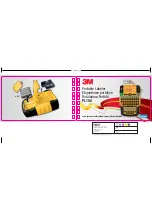
16
B. Service Diagnosis
WARNING
• The appliance should be diagnosed and repaired only by qualified service
personnel to reduce the risk of death, electric shock, serious injury, or fire.
• Risk of electric shock. Control switch in "OFF" position does not de-energize all
loads Use extreme caution and exercise safe electrical practices.
• Moving parts (e.g., fan blade) can crush and cut. Keep hands clear.
• Before servicing the appliance, move the control switch to the "OFF" position and
turn off the power supply.
•
CHOKING HAZARD:
Ensure all components, fasteners, and thumbscrews are
securely in place after the appliance is serviced. Make sure that none have fallen
into the dispenser unit/ice storage bin.
• Make sure all food zones in the appliance and dispenser unit/ice storage bin are
clean after service.
The diagnostic procedure is a sequence check that allows you to diagnose the electrical
system and components. Before proceeding, check for correct installation, proper voltage
per nameplate, and adequate water supply. Check CB using the steps in "II.D. Control
Board Check." Check dip switch settings to assure that S4 dip switches and S5 dip
switches 1 through 5 are in the factory default position. S4 dip switch 1, 2, 3, 4, and 5 are
cleaning adjustments and the settings are flexible. For factory default settings, see "III.C.1.
Default Dip Switch Settings."
Note: • When checking high voltage (115VAC), always choose a white (W) neutral wire to
establish a good neutral connection.
• When checking voltage from the CB K1 connector (10 pin connector), pull
CB K1 connector out slightly to allow room for multimeter test leads contact.
1) Turn off the power supply, then access the control box. Move the control switch to the
"OFF" position. Clear any ice from BC.
2) Check that the 115VAC 10A fuse is good.
















































